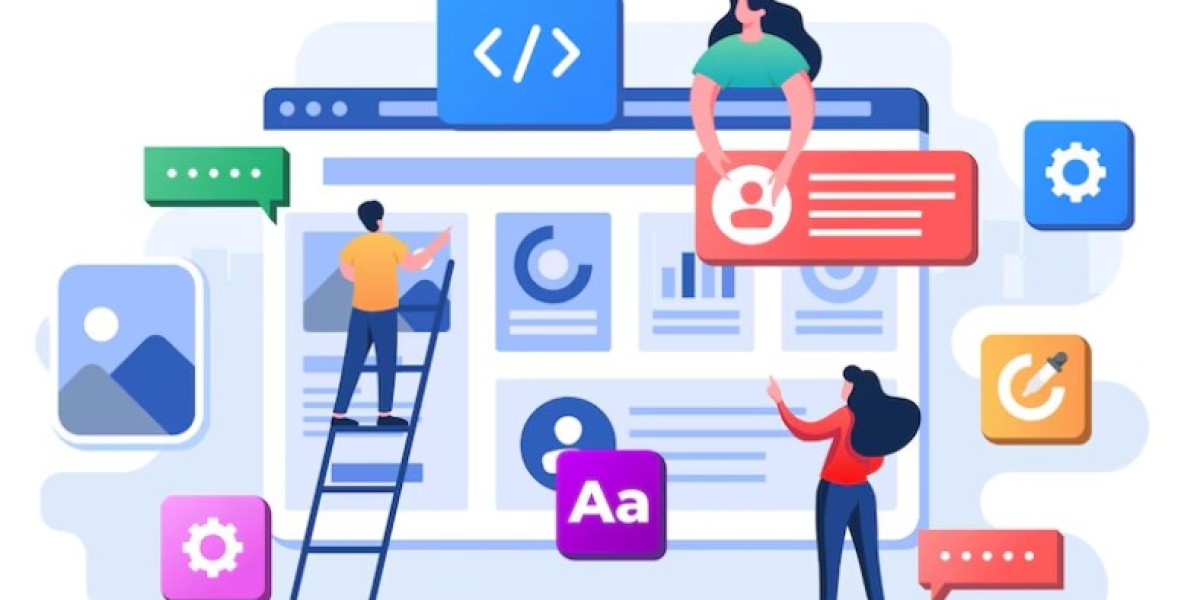Growth hacking refers to non-traditional marketing tactics that prioritize measurable growth over vanity metrics like followers or clicks. The goal is to grow a startup's user base and revenue as quickly as possible using data and experimentation.
This is crucially important for websites and apps aiming to scale rapidly and achieve success like Gojek. Gojek is a transport and payments app based in Southeast Asia valued at over $10 billion. It grew to over 170 million users across multiple countries in just under a decade through relentless growth hacking.
In this article, we will explore 13 effective growth hacking techniques that can help scale a Gojek-like on-demand service website or app. These techniques include viral loops, community building, customer education, remarketing and more. Let's dive in.
1. Viral Loops
One of the most powerful growth techniques is designing viral user-to-user growth loops. This involves incentivizing existing users to invite and refer their friends and connections.
Some ideas to create viral growth loops include:
Invite friends program: Allow users to easily invite friends to sign up through social media or emails. Offer credits/rewards for both inviter and invited once friends signup and complete an action like a ride.
Share for rewards: Encourage users to post about the app on social media like "Take your next ride free if 5 friends signup with your code!". Track shares and reward top sharers.
Referral badge: Show number of referrals each user has on their profile. Gamify it by offering exclusive badge levels as referrals increase like "Super Helper" for 25+ referrals. Human psychology makes them want to improve their status.
The goal is to effortlessly grow the user base through everyday social interactions instead of expensive user acquisition. Gojek supercharged growth through its early viral Cashback programs where users got rewards for every friend referred.
2. Community Building
Another important growth technique is cultivating an active online community for peer support, feedback and word-of-mouth. Some ways to do this include:
Launch Facebook Groups for different cities where people can discuss local issues, share trip experiences and help each other out. This fosters bonding.
Set up localized community forums for self-help. Integrate it with your app so people can log issues or ask questions directly from the app.
Engage power users to help moderate groups and answer common queries. This makes them brand advocates while saving support costs.
Host occasional community meetups in major cities for networking. Reward top contributors or give talks on upcoming features to keep users involved.
Leverage Telegram or WhatsApp for instant group assistance. People naturally turn to social networks they are already active on instead of separate help pages.
A thriving online community becomes an extension of your customer support and improves retention through social proof. Gojek community managers actively participated in Facebook groups to foster trust.
3. Customer Education
Education holds the key to increasing product stickiness and unlocking latent demand. Some education tactics include:
Email newcomers a step-by-step guide on app functionality like "5 easy steps to book your first ride". Improve understandability.
Create how-to videos, GIFs and screenshots showcasing features in bite-sized formats for social platforms. Cater to visual learners.
Launch a searchable Help Center or FAQs database from within the app for self-service troubleshooting. A/B test question formats.
Send push notifications highlighting new features at launch along with a call-to-action button like "Try it now".
Publish blog posts, eBooks or infographics aimed at solving common user pains, industries, or scenarios to increase perceived value.
Host webinars for corporates or key user groups sharing best practices real users have found success with.
Proper education assures users derive maximum value from all available features right from the start. It also enables organic showcase of newer capabilities. Checkout: https://zipprr.com/gojek-clone/
4. Remarketing
Remarketing focuses on re-engaging website visitors or app users who didn't complete a desired conversion action like booking a ride or signing up. Some remarketing ideas include:
Retarget visitors who added items to cart but didn't checkout with a discount code to incentivize purchase.
Send push notifications to users who started but abandoned trip booking reminding them of planned destination.
Retarget app users who browsed categories or drivers with relevant content and deals.
Show targeted ads to past users on related sites/apps showcasing exclusive offers.
Offer first-time users who don't convert a rewards program signup with credits on future orders.
Such targeted follow-ups and reminders gently nudge people towards the desired action without feeling like spam. It improves conversion of warm prospects.
5. SEO Optimization
Search Engine Optimization or SEO aims to naturally rank pages higher in search results. Some technical and content-based SEO best practices include:
Optimize page speed, load times and eliminate redirects that negatively impact user experience.
Incorporate target city/service/industry keywords both naturally in content as well as meta descriptions and titles.
Link internal pages together with descriptive anchor text for better internal linking structure.
Regularly publish high-quality long-form blogs, guides, case studies and resource pages related to target search phrases.
Set up an XML sitemap and robots.txt file for search engines to efficiently crawl the site structure.
Claim website and map locations on Google My Business for local pack visibility.
Monitor keywords to understand gaps, refine strategies based on search intent and improve technical SEO.
With patience and persistence, SEO can drive a steady stream of qualified organic traffic to your site over time.
6. Influencer Marketing
Influencer marketing involves leveraging popular bloggers, YouTube stars, industry leaders and hyperlocal micro-influencers in your target areas/niche to authentically endorse your brand. Some ideas include:
Reach out to influencers popular amongst your target audience offering sponsored content briefs tailored to their feed aesthetics and community.
Collaborate on co-created campaigns where influencers share their real experiences testing services. Have them incentivize followers through contests.
Run ambassador programs that empower influencers to curate branded content without direct payments but rewards like credits or invites to partnership programs.
Leverage industry forums, subreddits to partner with subject matter experts willing to write sponsored guest posts or be interviewed.
Hold local giveaways that influencers promote amongst their city circles with rewards like free deliveries.
Quality influencer marketing provides a third-party validation boost and niche penetration if executed genuinely based on influencer/audience fit.
7. Social Media Marketing
While influencers represent a pull strategy, your own social pages act as a push channel to regularly promote your brand. Consistency is key across platforms like:
Facebook - Share updates, launch announcements, deals, customer stories and event photos to engage local community.
Instagram - Post high-production images and videos showcasing lifestyle integration of your product or services for inspiration.
Twitter - Provide customer support, address issues, make industry announcements, participate in relevant conversations.
LinkedIn - Target corporate users with content on industry trends, hacks fortheir business, partnerships and successes.
Pinterest - For visual products, curate style guides, how-tos and lifestyle integration ideas people can save for future reference.
Leverage events, holidays and cultural occasions to weave branded messaging into the general community fabric. Monitor and respond to queries to build trust.
8. Content Marketing
Content marketing shares insights to position your brand as a thought leader while subtly promoting products. It can attract quality readers and build authority to warm them up for future conversion:
Publish long-form 300-1000 word blogs on common questions, emerging trends, case studies, data analyses and reports.
Create video tutorials, guidebooks, eBooks, infographics on productivity tips, industry best practices solving core user pains.
Curate regularly updating resources hubs, maps, calculators around key keywords.
Host an podcast interviewing users, experts and covering topics around services, lifestyle and business.
Develop a multimedia library of assets brands can leverage, excerpt or be interviewed about for third-party placements.
Prominently feature CTAs backed with social proof on all content directing to a relevant hub or Call-To-Action.
Quality, distribution and contextual links optimize this content's discoverability for qualified traffic and lead generation.
9. Alternative Listening Channels
Alongside apps and websites, emerging alternatives users frequent locally must be explored. Some examples are:
WhatsApp - Launch a verified business profile and automated bot for 1-1 support, order status updates and exclusive deals.
Telegram - Curate branded public channels for subgroups to follow updates, hold contests and discussions on announcements.
Facebook Messenger - Deploy AI chatbots here that can also be seamlessly accessed from within the app.
WeChat (China) - Adapt localization with features like social sharing of deals directly within the ubiquitous super app.
10. Paid Advertising/Promotions
Once organic efforts commence traction, paid advertising across multiple platforms can assist scale up faster:
Facebook/Instagram - Target locals with location-based dynamic ads showcasing services. Promote deals, events, blogs through engaged followers.
Google Search/Display - Bid on relevant ride-hailing, delivery keywords. Retarget visitors and in-market audiences with ongoing promotions.
YouTube - Fund monthly campaigns sponsoring top family/food vloggers integrating sponsored deliveries or trips authentically.
Programmatic Display - Bid algorithmically on premium publisher sites users frequent locally with GIF ads that drive discovery.
Performance Max campaigns - Focus budgets towards lead generation, app installs or on-site conversions like drive booking compared to clicks.
Testing budgets, creatives and segments regularly helps identify high ROI channels while sustaining efforts for long term growth.
11. App Store Optimization (ASO)
For app-focused businesses, good App Store Optimization boosts visibility and downloads. Some impactful ASO tactics include:
Use compelling app title and subtitle highlighting niche within 150 characters allowed on listings.
Write detailed one-paragraph description summarizing key features and value proposition targeted at your persona.
Optimize 5 relevant keywords and variations in app name, title, description based on customer intent and search volumes.
Upload visually appealing and purpose-driven screenshots targeting specific user flows that don't clutter or duplicate data.
Promptly respond to customer reviews whether 1-star or 5 to build trust & for search algorithms to rank engaged developers higher.
Analyze top competitors' listing best practices on elements like graphics, language to position your app competitively.
Regular A/B testing along with new version releases help optimize the app listing for better discoverability and conversions.
12. Email Marketing
Emails remain core for permission-based one-to-one communication with existing users. Building an email funnel through:
Welcome series for new signups guiding them to book first trip, highlighting key services.
Monthly newsletters recapping launches, deals, features to stay engaged and nurture value perception.
Birthday/Holiday greetings integrated with offers as contextual emotional connectors.
Targeted automated emails on popular timings with relevant content based on user profiles and behaviors like deliveries at dinner time.
Surveys, contests, surveys as interactive engagement tactics with incentives of discounts on responses.
Test email design, copy, send frequency, offers, messaging with analytics and progressive profiling to maximize open and response rates.
13. PR and Media Outreach
Earning positive third-party coverage from media amplifies your narrative to qualified audiences:
Pitch client success stories, milestone achievements or new partnerships to lifestyle magazines, industry dailies for sponsored features.
Collaborate with hyperlocal publications covering emerging startups for earned feature stories upon usage growth in cities or tie-ins to events.
Participate with Young Entrepreneur panels at business conferences to gain new connections and speaking opportunities.
Host press events announcing product updates, city launches for journalists allowing them exclusive access and incentives for early scoops.
Connect with business reporters on LinkedIn highlighting expertise to nurture as sources for future stories.
Craft and monitor regularly updated media kits with one-pagers, assets, services directories for easy pitching.
PR drives organic backlinks while the earned social proof and third-party validation boost credibility.
Conclusion
As seen above, hacking growth requires an amalgamation of both push and pull tactics testing across organic, paid and earned media simultaneously. While viral user-gets-user programs and communities emphasize pull, education and onboarding complement them better as push strategies.
Remarketing, SEO, ASO and content marketing establish long-term sustainable growth by attracting qualified traffic and filling top-of-the-funnel over time. Finally, PR, influencer networks help scale awareness faster besides customer lifecycle nurturing through emails and push.
The key is to pick high potential techniques, set up tracking and metrics upfront before launches, then experiment incrementally based on learnings. Monitor qualitative feedback too on top of analytics. Successful companies like Gojek deployed such a multifaceted approach from an early-stage.
I hope these 13 growth hacking techniques provide a solid starting framework for scaling your Gojek-like service. The ones generating best ROI must be doubled down on while testing new combinations.Consistency, data and relentless optimization will help pave the way for accelerated growth.








